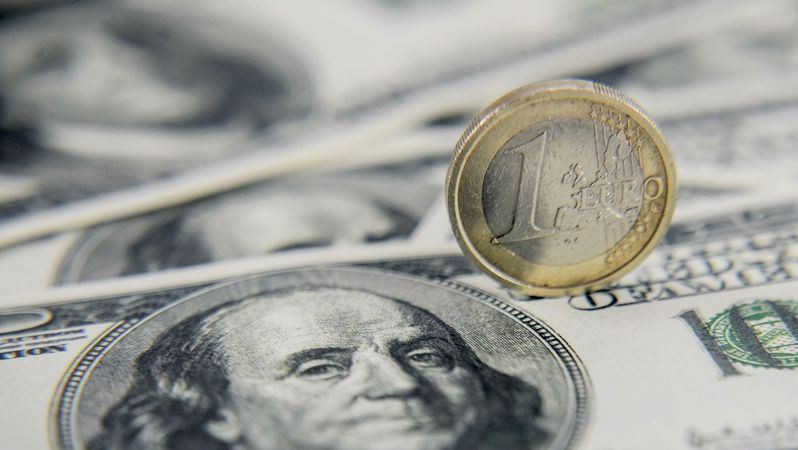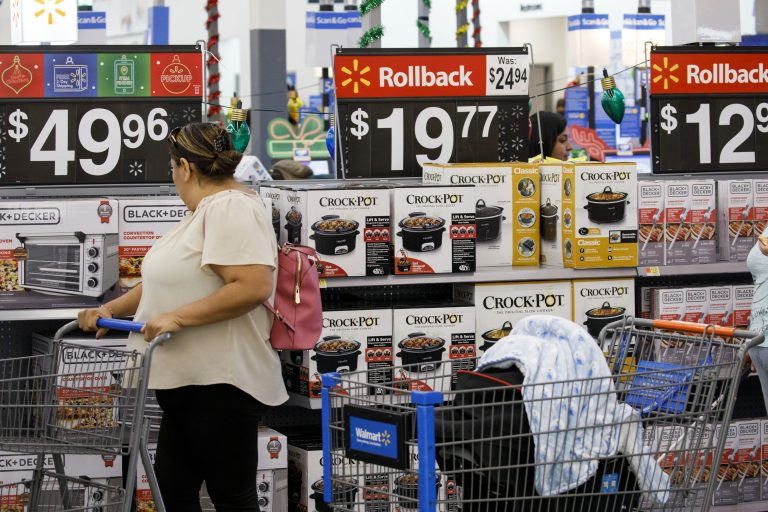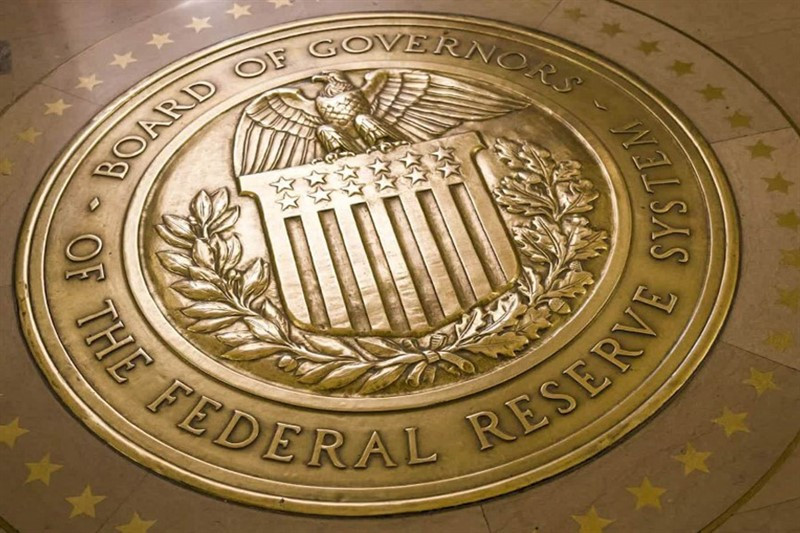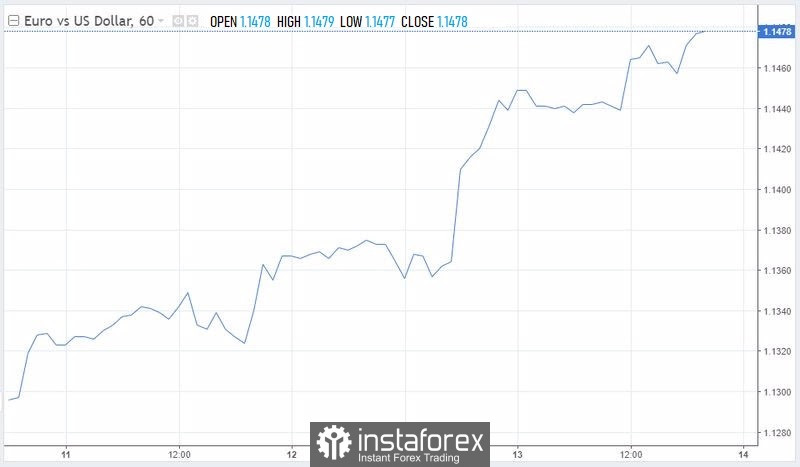
On Monday, the greenback was able to recoup some of its Friday losses in anticipation of the hawkish comments of Federal Reserve Chairman Jerome Powell and the US inflation report for December.
Several FOMC hawks have already come out in support of raising rates in March, as well as an aggressive reduction in the Fed's balance sheet, which currently stands at almost $8.8 trillion.
However, the tone of the statements of Powell turned out to be more calm. During his speech in the Senate at the confirmation hearing for the post of head of the Fed, he focused on a strong economy and refrained from promising imminent action. His calm mood led to a decline in the dollar on Tuesday, and the market reaction to the release of the US consumer price index on Wednesday is a continuation of this step.
Although inflation in the United States rose to almost a 40-year high in December, the greenback still suffered losses against its main competitors. After Powell's cautious comments on the topic of reducing the size of the central bank's balance sheet, the fact that inflation remained within expectations seems to have hit the dollar.
The USD index has lost more than 0.6% and cannot recover yet, continuing to stay in the red zone below 95.00.
The dollar suffered losses and sank below key support levels after US inflation turned out to be no higher than expected in December and prompted investors to reduce long positions in the US currency.
Despite the fact that consumer prices last month showed the biggest jump since June 1982, market participants do not believe that this will change the Fed's already hawkish plan too much.
As the signals of tightening the monetary policy of the Fed become clearer, some traders are beginning to look for opportunities to exit and take profits on USD.
They are betting on a further weakening of the US currency, believing that inflation in the United States will soon peak.

"Inflation will continue to accelerate in the United States at the beginning of 2022, stabilize and begin to slow down in the second quarter," analysts at RBC Capital Markets believe.
A similar opinion is shared by Cornerstone Macro economists, who predict that inflation in America will slow down to 1.4% by the end of 2022.
"In this case, the Fed will raise rates only twice, since the regulator has an inflation target of 2%," they noted.
As stated by the president of the Federal Reserve Bank of San Francisco Mary Daly, inflation is at uncomfortably high levels. She expects price pressure to ease as the COVID-19 pandemic recovers, imbalances are eliminated and accommodation measures are curtailed, but she does not want to get too far ahead and name the number of rate increases.
The next meeting of the US central bank will be held on January 25-26.
The futures market estimates an 80% chance of an increase in the federal funds rate in March. With a probability of about 60% by December, the rate will be increased to 1.25% from the current near zero level. The collapse of the Fed's balance sheet may begin in the middle of the year.
"The dollar should not rise just because the Fed is preparing a tightening cycle," Commonwealth Bank of Australia strategists said.
"This is not a simple equation when the Fed's rate hike equals the dollar's rise. The greenback is an anti-cyclical currency that declines as the global economy recovers," they added.
"The weakening of the dollar is a natural part of the global recovery, as markets view the current risks from Omicron as if the pandemic will become much more manageable this year. As economic activity normalizes, there should be even more capital flows to other parts of the world," said strategists at Barings Investment.
Others say that it is too early to write off the USD and believe that the recent decline in the US currency simply reflected the weakening of investors' fears that the US inflation data on Wednesday did not show an even greater price increase, and was a reaction to Powell's statements.

Citigroup specialists cite the rise in US interest rates and the quantitative tightening of the Fed as factors that will contribute to the greenback rise.
"We remain long the dollar but are on the lookout for more relative value than before the recent jump in real yields in the United States," they said.
On Thursday, the US currency took a pause in the decline after falling at the fastest pace since May on Wednesday.
The level of 94.60, near which the 100-day moving average passes, can provide immediate support for the USD index, while the September high around 94.50 could be a tough nut for the dollar bears.
If the quotes fall below this level, the August high at 93.70 will be in the spotlight.
On the other hand, initial resistance is found at 95.10, followed by 95.50 and 95.90.
"After inflation in the US showed growth to 7%, players began to "sell on the facts" and close long dollar positions. However, we believe that the USD countertrend will not last long and the US currency will soon recover, as the imminent tightening of the Fed's policy and the increased likelihood of four rate hikes in 2022 still support the greenback, which will be in demand on the decline amid a retreat from the overbought area. ", - ING analysts noted.
Unlike the Fed, many central banks in developed countries are not yet ready to tighten policy as decisively. Therefore, the USD index may bottom in the near term, after which it will return to an upward trajectory, nullifying the recent gains of the EUR/USD pair.
Against the backdrop of increased bearish pressure on the dollar, the major currency pair broke out of the 1.5-month range and reached its highest level since November 11 near 1.1480.
According to Credit Suisse forecast, the EUR/USD pair will trade in the range of 1.1050-1.1600 in the first quarter. At the same time, the bank expects that by the end of the quarter the rate of the pair will be 1.1150.

"Levels above 1.1450 represent convenient short positions in terms of risk/reward. Markets continue to price the ECB rate hike by 25 basis points over the next 12 months, although ECB officials themselves deny this," Credit Suisse strategists said.
"Markets continue to believe that the current high inflation in the euro area and the impact of the Fed's monetary policy will force the ECB to act. This provides the single currency with some support, limiting the impact of rate divergence in the US and the eurozone," they added.
In an economic bulletin published today, the European Central Bank acknowledged that the exact extent of the impact of the COVID-19 Omicron strain on the economy is highly uncertain.
In 2022, the ECB is likely to pursue a cautious policy, keeping an eye on the epidemic situation. In case of deterioration of the latter, the central bank can restore or even increase the volume of money emission. If the situation with the pandemic is successfully resolved, the ECB may completely curtail quantitative easing programs before the end of 2022 and raise interest rates in 2023.
Currently, the EUR/USD pair is hovering around a two-month high, having previously shown the strongest daily jump since early December.
The nearest support is at 1.1440, and further - at 1.1400 and 1.1380. As long as these levels remain unbroken, buyers will remain interested in the single currency.
The initial resistance was marked at 1.1480, and then at 1.1510 and 1.1550.





















